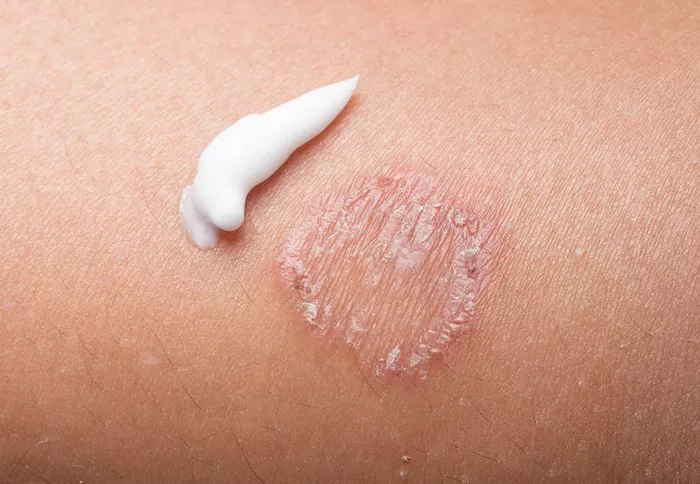In the realm of dermatological conditions, few are as misunderstood and surrounded by misconceptions as vitiligo. Characterized by the loss of pigment in patches of skin, vitiligo often prompts speculation and unfounded theories about its cause. Among these is the persistent misconception that vitiligo is a fungal infection. However, medical evidence and research unequivocally refute this notion. In this article, we delve into the science behind vitiligo, dispel the myth of its association with fungal infections, and explore the true nature of this condition.
Understanding Vitiligo: A Complex Dermatological Condition
Vitiligo is a chronic autoimmune disorder that results in the destruction of melanocytes, the cells responsible for producing the pigment melanin. Melanin gives skin its color and protects it from the harmful effects of UV radiation. When melanocytes are destroyed, the affected areas lose pigment, resulting in white patches on the skin. While the exact cause of vitiligo remains unclear, it is believed to involve a combination of genetic, autoimmune, and environmental factors.
The characteristic white patches of vitiligo can appear on any part of the body, although they often occur symmetrically and are most commonly found on sun-exposed areas such as the face, hands, arms, and feet. The condition can have a profound impact on the physical appearance and psychological well-being of affected individuals, leading to feelings of self-consciousness, anxiety, and depression.
Debunking the Myth: Vitiligo is Not Caused by Fungal Infections
Despite the scientific understanding of vitiligo, myths and misconceptions persist, including the mistaken belief that it is a fungal infection. This misconception likely stems from the appearance of the white patches, which some may associate with fungal infections such as tinea versicolor. However, while both conditions can result in changes to the skin’s pigmentation, they are fundamentally different in nature.
Fungal infections, such as tinea versicolor, are caused by various species of fungi that proliferate on the skin’s surface. These infections often manifest as discolored patches, typically lighter or darker than the surrounding skin, and may be accompanied by itching or scaling. Unlike vitiligo, which is an autoimmune disorder involving the destruction of melanocytes, fungal infections are caused by external pathogens and can usually be treated with antifungal medications.
Numerous studies have investigated the relationship between vitiligo and fungal infections, and the overwhelming consensus is that no such association exists. Research has shown that the pathogenesis of vitiligo involves complex interactions between genetic predisposition, autoimmune mechanisms, oxidative stress, and environmental factors, none of which include fungal infections as a causative factor.
Furthermore, clinical observations and diagnostic tests can easily distinguish between vitiligo and fungal infections. Dermatologists rely on a variety of methods, including Wood’s lamp examination, skin biopsies, and fungal cultures, to accurately diagnose skin conditions and differentiate between them. These diagnostic tools allow healthcare providers to provide appropriate treatment and management strategies tailored to each patient’s specific condition.
The True Nature of Vitiligo: An Autoimmune Disorder Requiring Comprehensive Management
Understanding vitiligo as an autoimmune disorder is crucial for developing effective treatment and management strategies. While there is currently no cure for vitiligo, various treatment options are available to help repigment the skin and minimize the appearance of white patches. These may include topical corticosteroids, calcineurin inhibitors, phototherapy, and surgical techniques such as melanocyte transplantation.
In addition to medical interventions, psychosocial support and counseling play a vital role in helping individuals cope with the emotional impact of vitiligo. Addressing feelings of self-esteem, body image, and social acceptance can significantly improve the quality of life for those living with the condition.
Furthermore, ongoing research into the underlying mechanisms of vitiligo offers hope for future advancements in treatment. From targeted immunomodulatory therapies to stem cell-based approaches, scientists are exploring innovative strategies to restore pigmentation and halt the progression of the disease.
Conclusion
Vitiligo is a complex autoimmune disorder characterized by the loss of pigment in patches of skin. Despite persistent myths and misconceptions, there is no evidence to support the idea that vitiligo is caused by fungal infections. Rather, the condition involves the destruction of melanocytes due to autoimmune mechanisms.
By debunking the myth of vitiligo as a fungal infection and promoting a deeper understanding of its true nature, we can foster greater empathy, support, and effective treatment for those affected by this often-misunderstood condition. Through comprehensive management approaches that address both the physical and emotional aspects of vitiligo, we can improve the lives of individuals living with this dermatological disorder.

























